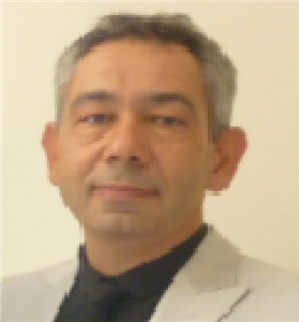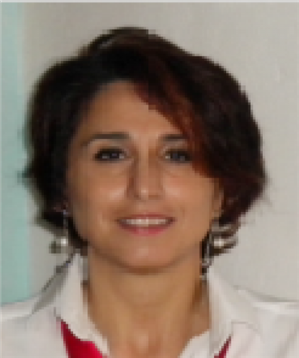Consultant to Leonardo Land & Naval Defence Electronics, Italy
Honorary Chair, RadarConf20 | IEEE Radar Conference
 Prof. Fulvio Gini FIEEE
Prof. Fulvio Gini FIEEE Professor at University of Pisa
General co-Chair, RadarConf20 | IEEE Radar Conference
General co-Chair, RadarConf20 | IEEE Radar Conference

Prof. Maria Sabrina Greco FIEEE
Professor at University of Pisa
General co-Chair, RadarConf20 | IEEE Radar Conference
 by
by
Dr Michele Fiorini CEng FIET
General co-Chair, RadarConf20 | IEEE Radar Conference
 by
byDr Michele Fiorini CEng FIET
IET Italy Chair
On 15 January 2020 in my capacity as Chair of the Institution of Engineering and Technology (IET) Italy Network, I have had the honour and privilege to interview the Honorary Chair and General co-Chairs of the IEEE Radar Conference in the beautiful city of Florence, Tuscany. Hereafter what they anticipated to us on the upcoming event.
Q.1)
In 2008 there was a very successful Radar event in Rome (IEEE RadarCon2008), it was extremely well prepared and attended, good memories are still around. Is RadarConf20 linked or inspired by it somehow? Are there any connections?
AF: This conference is one in the series of radar conferences promoted by the IEEE Aerospace and Electronics Systems Society (AESS), Radar Systems Panel. The IEEE Radar Conference was always held in the United States, but in May (26-30) of 2008, for the first time it was held in Rome, the beautiful capital of Italy and the ancient Roman Empire. On this unique occasion, the conference was privileged to be under the High Patronage of the President of the Italian Republic. The conference was a great success with 650 attendees from 45 Nations: see the published report[1] and the IET-RSN special issue[2].
The IEEE Radar Conference lands again after twelve years, in Italy, and this time in Florence. We are doing our best to ensure the comfort and enjoyment of our guests as well as reach new levels of success. So, why a Conference in Florence? Conference in Florence not only because of the city that is undoubtedly wonderful (all recognise the role played by the Italians in the Renaissance) but also because of the broader International Radar Community in Italy today.
The Renaissance begins a hundred years earlier in Florence than elsewhere, so it seems most fitting that we meet here, in its very birthplace. Long before Michelangelo and Leonardo became household names, there lived Boccaccio and Petrarca, who discovered the beauty and value of classical literature, eventually creating the modern short story and sonnet respectively with this immediately following the quintessential Medieval man, Dante. Thus, the Renaissance begins with words, before visual arts, so it is only right to have this wonderful event here, with "exchanges of words" in its birthplace.
FG: This edition of the Radar conference heavily builds on that edition. All three of us were already involved with the organising committee of the Rome edition: Alfonso was the General Chair, I was the Technical Program Co-Chair and Sabrina was the Paper Management Chair. Furthermore, there are other colleagues, that were involved with the Rome conference, that are now members of the Organising Committee for this conference. Hence, we are indebted to RadarCon2008 for allowing us to gain experience and enjoy the pleasure of working as a team under Alfonso’s guidance, with the common goal to offer our colleagues and friends of the international Radar Community a unique event to remember in the forthcoming years. The fact that the IEEE AES Radar System Panel decided to accept our proposal to organise another conference in Italy, especially after a few years, it is somehow a demonstration that in 2008 we really succeeded.
Q.2)
Fulvio, the conference subtitle ‘Renaissance Meets Advancing Technology’ is fascinating. Could you please explain a bit more what are the values/themes of RadarConf2020?
I like this question. It allows me to speak about a city that I love: Firenze. Internationally known as Florence, the capital of Tuscany, one of the most widely known tourist spots in Italy and in Europe, and for a number of good reasons; The Chianti and Brunello di Montalcino wines, the genuine leather shops and jewellers on the Ponte Vecchio, the genius of Leonardo da Vinci, the fashion maisons Gucci and Ferragamo, and, above all, the arts.
The whole town is a living museum of art, with masterpieces from the Middle ages such as the Town Hall “Palazzo Vecchio” and the “Campanile (Bell Tower) of Giotto”, as well as landmarks of the Renaissance like the celebrated “Cupola (dome) del Brunelleschi” and the stunning statue “David” by Michelangelo. Art is everywhere, from the renowned Uffizi Museum up to the church of San Miniato al Monte and the quiet hills of Fiesole nearby, down to the humblest artisan shops on the street.
It was at places only few kilometres away from the conference location that our scientist and engineer forefathers Galileo Galilei and Leonardo da Vinci, respectively, made their ground-breaking discoveries. We are excited to organise the conference for only the second time ever in Italy, after the successful edition in Rome in 2008, and in those places where the Renaissance opened paths to the birth of modern science, and a new consideration of the role of mankind altogether. This is particularly true these days as we witness an important growth of the many fields of application of radar techniques, in addition to the traditional ones. This is why we have coined a motto for the 2020 edition that matches the spirit of the place: “Renaissance Meets Advancing Technology.”
During the conference (details at the website https://www.radarconf20.org/), participants will be intrigued by the program of plenary talks, the extensive offer of tutorials, special sessions, and demo sessions, not to mention the many oral and poster sessions generated by the response of the open call. But the 2020 edition will be also an occasion to showcase the technology of local as well as global companies working in the field of radar, that will display their products and services in the exhibition area of the conference site. The themes of this edition, in addition to the traditional ones at a radar conference, will focus on civilian applications of radar technologies, from satellite remote sensing of the Earth to automotive radar, from health monitoring to urban areas monitoring, to mention just a few!
If the art of radar has to be the leitmotiv of the conference, then arts be, even during the social events. So, the conference will feature a magnificent banquet in the Cloister of Santa Maria Novella and a classical music concert in the traditional Theatre “La Pergola”. We are confident that the RadarConf20 attendees will appreciate that.
Q.3)
Sabrina, networking is a key value in business and definitely a benefit of attending a conference. At such an important event, organised and chaired by Radar’s primary engineers such as yourselves, the audience is expecting to meet the most renowned Radar’s and systems engineers. Would you anticipate any additional names?
All the IEEE Radar Conferences are good occasions for senior engineers like me to meet colleagues and friends from all over the Word, to extend our network, to talk about our research ideas. For students and young professionals, even more. This kind of conferences are excellent ways to meet the more experienced and skilled radar engineers and to introduce themselves to the Radar Community.
This year the President of the IEEE Aerospace and Electronic Systems Society, Walt Downing, will be our guest. And we will also be honoured to have among our attendees the President-Elect Mark Davis.
The program of the conference, of course, is not finalised yet and the paper submission process is still ongoing. I can only anticipate that, as Fulvio already said, for this edition of the conference, in addition to the traditional topics, we are also focusing on civilian applications of radar technologies. So we are targeting plenary speakers and special sessions organisers who are experts of these modern civilian applications, and, together with the regular attendees of the IEEE Radar Conference, we expect to have experts from the European Space Agency (ESA), the Italian Space Agency (ASI) and the automotive and e-health radar industry.
And I’m very proud to say that, the invited speaker of our Banquet will be Dr. Elena Griffoni-Winters, the first woman Head of the Director General's Cabinet at ESA. And we are also organising a WIE (i.e. IEEE Women in Engineering) event, focused on the unconscious gender biases in STEM (Science, Technology, Engineering and Mathematics). It will be a very rich program!
Q.4)
Alfonso, why should I make the effort to attend a conference in person in XXI century? Knowledge and information are available online at all levels, so I don't need to take a week out of the office, travel, book a hotel, pay registration fees, etc. Also, for the Organising Committee it is a great effort as works start at least 2 years in advance. Why should people spend time and money to attend a traditional conference in general and specifically the RadarConf20 in Florence, Italy?
A conference is still worth holding, because its attendees use “all senses” to acquire information. To be present in person at a conference allows the unique opportunities to nurture old friendships and make new ones, to establish new collaborations and alliances. Attendees can look at exhibition booths and interact with stakeholders (industries, universities, agencies and so forth). Attendees enjoy the event more than those via social media do, though the latter are also important, and at times, essential. The attendees will have the possibility to ask questions directly to the speakers, in more detail, and the speaker might tailor their speech to the audience’s interest. The attendees may select the technical sessions to follow but then rapidly revise their choice. The down-times (coffee break, social dinner) can be utilised for brainstorming, and the exchange of comments and ideas. The presentation of the technical material will be more effective because the speaker may emphasise important points by modulating voice and gesture. The attendees will experience full immersion into the technical material, facilitating a deeper comprehension of the material. Person to person interaction will enable listeners to grasp concepts that are more complex. Special sessions (focused on selected topics), demo sessions (with real hardware), student context (to attract young engineer to the radar community) and tutorials (held by leading experts) are typical of traditional conferences.
Today, information and knowledge are commodities, like the electromagnetic spectrum too which is becoming one of the key conference topics. According to the writer George Bernard Shaw, and to expert on knowledge management Carl Sveiby: “Knowledge shared is knowledge doubled”. This resonates with the Latin word “Confero”, which means to bring together, to compare. Confero is the Latin root of the English word “conference”.
So, in today’s information age, is it still valid to hold a traditional conference? All of our globally-connecting-social-networking tools are making face-to-face more desirable, rather than less. There is an effect of emotional contagion that happens when around a group of people who share common interests, enthusiasm, and passions. For me, the conference is the marketplace of knowledge and new ideas. Potentially then, the conference is a “knowledge multiplier.” The Rome event is still vividly remembered by the attendees. Indeed, the organising committee have put forth a remarkably multifaceted effort. We like tackling complex undertakings, and “Advancing Technology for the Benefit of Humanity”. Person to person interaction is vital in this respect, and at its best, fulfils the IEEE motto.
To conclude, the money to attend the conference is well spent. We hope you learn more about radar, enjoy the collegiality of the conference, and Florence.
[1] A. Farina, F. Gini, P. Lombardo, “2008 IEEE Radar Conference, 26-30 May, Rome, Italy”, IEEE A&E Systems Magazine, June 2009, pp. 41-42.
[2] A. Farina, F. Gini, P. Lombardo, “Editorial. Special issue: Selected papers from IEEE RadarConf 2008”, IET-RSN special issue after Rome 2008. IET Radar Sonar Navig., 2009, vol. 3, Iss. 4, 287-289.
